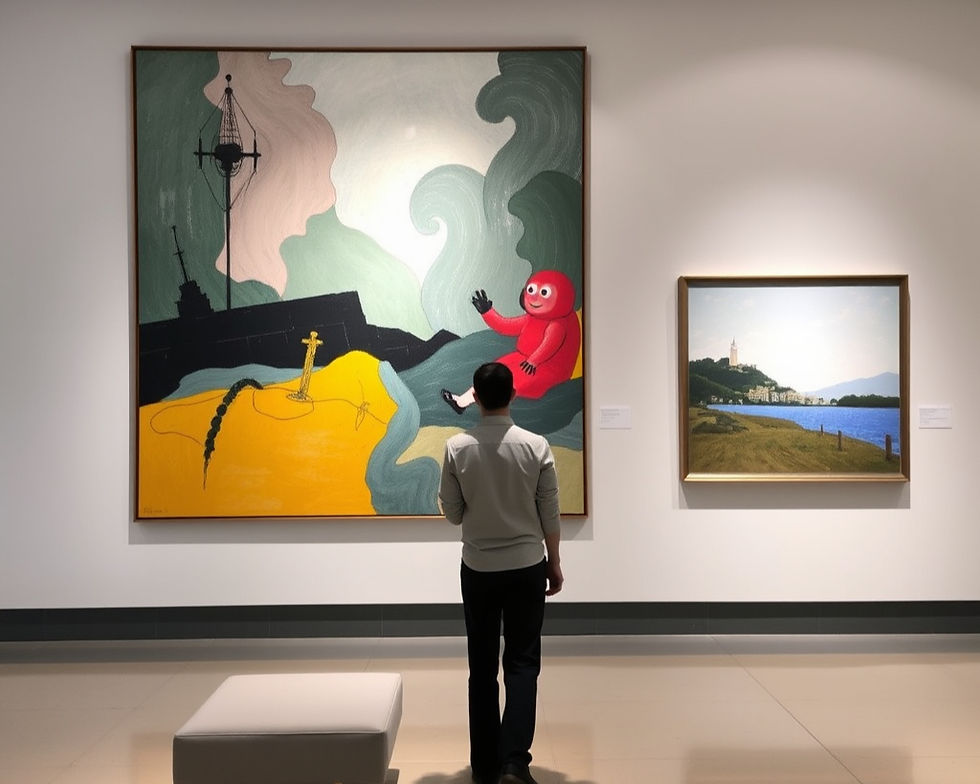The Resurgence of Traditional Art: Why Collectors are Returning to Physical Mediums
- Win Gate Group
- Jul 10
- 3 min read
Updated: Aug 4
In 2024, Sotheby’s reported a 29% surge in oil painting and sculpture sales—the highest since 2015. As digital art markets fluctuate, collectors are rediscovering the timeless value of tactile, physical artworks.
This isn’t just nostalgia. Galleries note that 72% of new buyers under 40 now prioritize traditional mediums for their longevity, sustainability, and emotional resonance (Art Market Report, 2024).
In this guide, you’ll learn:
Why traditional art is outperforming digital in 2025
The top 4 mediums with the highest resale potential
How to spot undervalued pieces before they skyrocket
Why Traditional Art Is Thriving in 2025
Tangibility Matters
68% of millennial collectors prefer art they can touch and display (Art Basel 2024). Physical presence creates deeper emotional connections. There are no tech risks involved: no blockchain crashes or platform dependencies.
Sustainability Concerns
A single NFT transaction consumes the same energy as a one-hour flight (MIT, 2023). In contrast, traditional artists like Khalil Chishtee use reclaimed materials to create life-size sculptures from recycled plastic bags. This commitment to sustainability resonates with many collectors.
Investment Stability
Auction trends show that traditional art has increased by 12% year-over-year, while NFTs have decreased by 34% (Forbes 2024). Traditional art offers less volatility, with no "hype cycles"—its value grows steadily over time.

Top 4 Traditional Mediums to Collect in 2025
1. Oil Paintings
Why? Timeless appeal and archival durability.
Focus on: Small-scale works (under 60x60cm) by emerging artists.
Example: "‘Coastal Light’ by [Artist] sold for $3,000 in 2023 – now appraised at $8,500."
2. Limited-Edition Prints
Look for: Signed editions under 50 prints (rarity equals value).
Pro Tip: Verify authenticity with gallery documentation.
3. Mixed Media Sculpture
Trend: Use of sustainable materials like bronze and recycled glass.
Stat: Sculpture resale values increased by 18% in 2024 (Artsy).
4. Watercolor
Hot niche: Botanical and architectural illustrations.
Google Trends: Searches increased by 22% in 2024.
Supporting Local Artists and Communities
Alongside personal interest, there is a growing commitment among collectors to support local artists and their communities. As movements for sustainability gain popularity, many collectors prioritize local talent, understanding the positive impact of their purchases on local economies.
Investing in local art not only supports artists but also contributes to community development. Collectors in 2025 are mindful of how their buying habits can foster creativity and craftsmanship within their cultural landscape.
5 Signs a Traditional Artwork Will Appreciate
The artist shows in brick-and-mortar galleries (like Wingate35).
Their medium has historical prestige (e.g., oil, bronze).
The work is documented in exhibition catalogs.
It’s part of a cohesive series (e.g., a "Blue Period").
The price is below $1,000 for emerging names.

Conclusion: How to Start
Traditional art offers tactile beauty, market stability, and eco-conscious appeal. For new collectors:
Start with one small oil painting or signed print.
Focus on emerging artists with gallery backing.
Buy what you love—passion always outweighs trends.
The Role of Social Responsibility
Modern collectors are increasingly aligning their values with their purchasing behaviors. The traditional art space is responding by emphasizing sustainability and ethical practices. Many collectors now actively seek out artists who prioritize socially responsible approaches, ensuring that their collections also reflect their beliefs.
In 2025, art collecting is becoming a pathway for social awareness. Approximately 58% of collectors favor works produced through sustainable materials. This alignment between ethical values and artistic expression cultivates trust between artists and collectors.
The Future of Traditional Art
As we look ahead, the future of traditional art appears bright. Collectors are not just investing in art; they are investing in stories, emotions, and values. The resurgence of traditional mediums signifies a shift in priorities. Collectors are seeking authenticity and connection in their art choices.
Embracing Change
The art world is evolving. While digital art has its place, traditional art offers a sense of permanence and history. This is why collectors are turning back to the classics. They appreciate the craftsmanship and the stories behind each piece.
Building a Lasting Collection
For those looking to build a lasting collection, understanding the nuances of traditional art is essential. Researching artists, attending exhibitions, and engaging with galleries can provide invaluable insights.
Conclusion
In conclusion, traditional art is not just surviving; it is thriving. As collectors embrace the tangible, sustainable, and emotionally resonant aspects of traditional art, they are shaping a future where art continues to hold significant value. Collectors are encouraged to explore this vibrant world and discover the joy of owning a piece of history.



